The rod AB moves with a constant velocity v relative to the rod AB Fig. 1.91. Both rods have the same proper length l0 and at the ends of each of them clocks are mounted which are synchronized pairwise: A with B and A with B. Suppose the moment when the clock B gets opposite the clock A is taken for the beginning of the time count in the reference frames fixed to each of the rods. Determine:a the readings of the clocks B and B at the moment when they are opposite each other;b the same for the clocks A and A.
At the instant the picture is taken the coordintes of A B A B in the rest frame of AB are In this frame the coordinates o f B at other times are B: t vt 0 0. So B is opposite to B at time tB=lo/v. In the frame in which B A is at rest the time corresponding this is by Lorentz tranformation.
Related Solutions
The rod moves with a constant velocity v relative to the rod AB (figure). Both rods have the same proper length and at the ends of each of them clocks are mounted, which are synchronized pariwise: A with B and with . Suppose the moment when the clock gets opposite the clock A is taken for the beginning of the time count in the reference frames fixed to each of the rods. Determine:
(a) the readings of the clocks B and at the moment when they are opposite each other,
(b) the same for the clocks A and .

View SolutionThere are two groups of mutually synchronized clocks K and moving relative to each other with a velocity v as shown in Figure. The moment when the clock gets opposite the clock A is taken for the beginning of the time count. Draw the approximate position of hands of all the clocks at this moment "in terms of the K clocks", "in terms of the clocks".
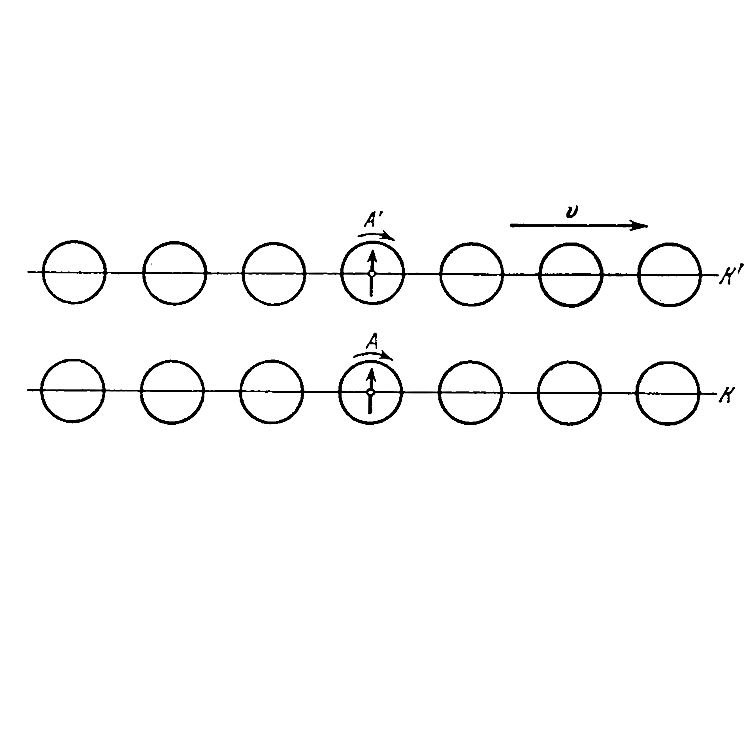
View Solution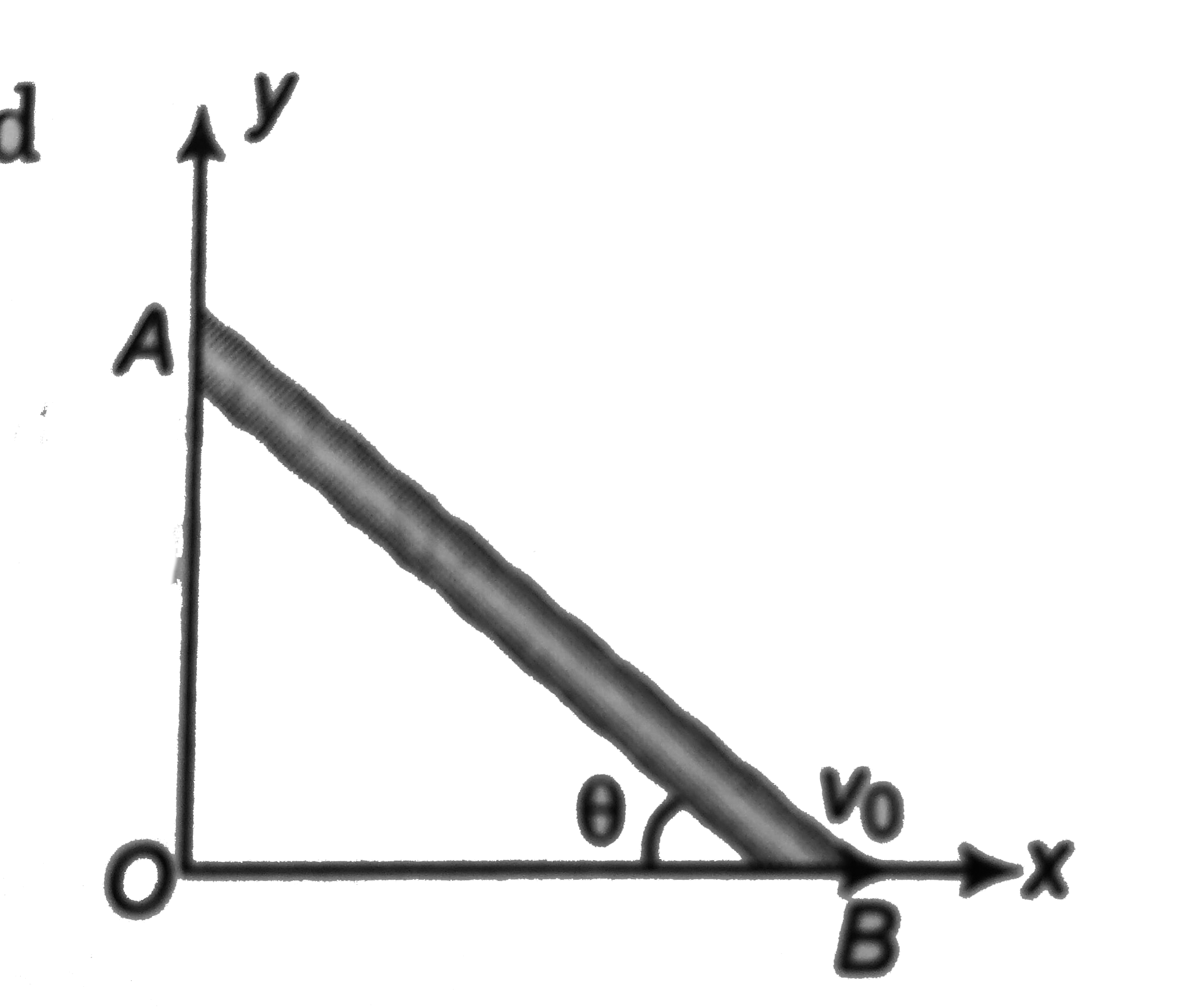
The end B of the rod AB which makes angle with the floor is being pulled with a constant velocity as shown. The length of the rod is .
View Solution
The end B of the rod AB which makes angle with the floor is being pulled with a constant velocity as shown. The length of the rod is .
View SolutionA rod AB oriented along the x axis of the reference frame K moves in the positive direction of the x axis with a constant velocity v. The point A is the forward end of the rod, and the point B its near end. Find:
(a) the proper length of the rod, if at the moment the coorniate of the point A is equal to , and at the moment the coordinate of the point B is equal to ,
(b) what time interval should separate the markings of coordinates of the rod's ends in the frame K for the difference of coordinates to become equal to the proper length of the rod.
View SolutionIntroduce the following definition: the length of a moving rod is the product of its speed and the time interval between the moments when its two ends pass a static clock. llhe proper length is determined in a similar way with the aid of a clock moving at the same speed along a static rod. Find the relation between the length of a moving rod l and its proper length .
View SolutionThe pendulum of a clock is made of a thin iron rod. On a hot day the clock will
View SolutionWire carrying a study current and rod AB are in the same plane the rod move parallel to wire with velocity v then which end of the rod is at higher potential.
View Solution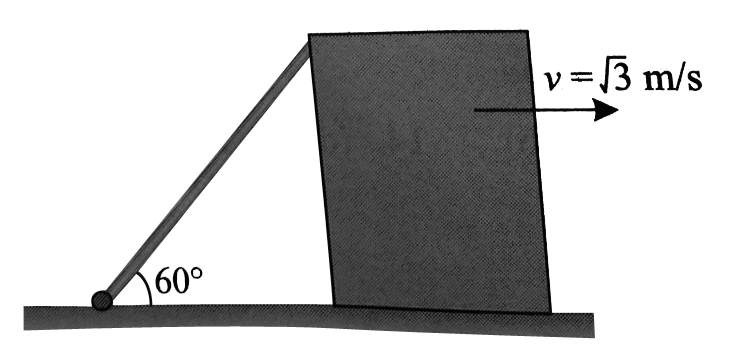
A rod AB is shown in figure. End A of the rod is fixed on ground. Block is moving with velocity m/s towards right. The velocity of end B of rod when rod makes an angle of with ground is :
View SolutionA rod AB is shown in figure. End A of the rod is fixed on ground. Block is moving with velocity m/s towards right. The velocity of end B of rod when rod makes an angle of 60^@ with ground is :
View SolutionA rod of length l is moving in a vertical plane ( x-y ) when the lowest point A of the rod is moved with a velocity v . find the a angular velocity of the rod and b velocity of the end B .
View SolutionA rod AB of length L and mass M is free to move on a frictionless horizontal surface. It is moving with a velocity v, as shown in figure. End B of rod AB strikes the end of the wall. Assuming elastic impact, the angular velocity of the rod AB, just after impact, is
View SolutionA rod AB of length L and mass M is free to move on a frictionless horizontal surface. It is moving with a velocity v, as shown in figure. End B of rod AB strikes the end of the wall. Assuming elastic impact, the angular velocity of the rod AB, just after impact, is
View SolutionA rod AB of length L and mass M is free to move on a frictionless horizontal surface. It is moving with a velocity v as shown in the figure. The B end of the rod AB strikes the end of the wall. Assuming collision elastic, the angular velocity of the rod AB just after the impact is
View SolutionA rod AB of length L and mass M is free to move on a frictionless horizontal surface . It is moving with a velocity v , as shown in figure. End B of rod AB strikes the end of the wall. Assuming elastic impact , the angular velocity of the rod AB , just after
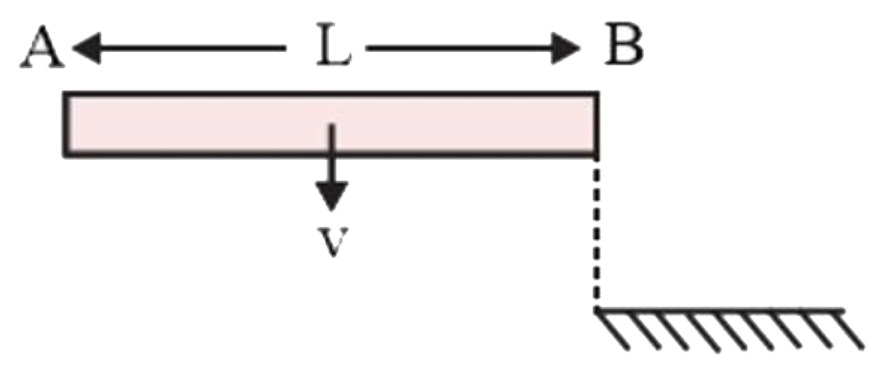
View SolutionA rod od length is moving in a vertical plane () when the owest point of the rod is moved with a velociy . find the a angular velocity of the rod and velocity of the end .
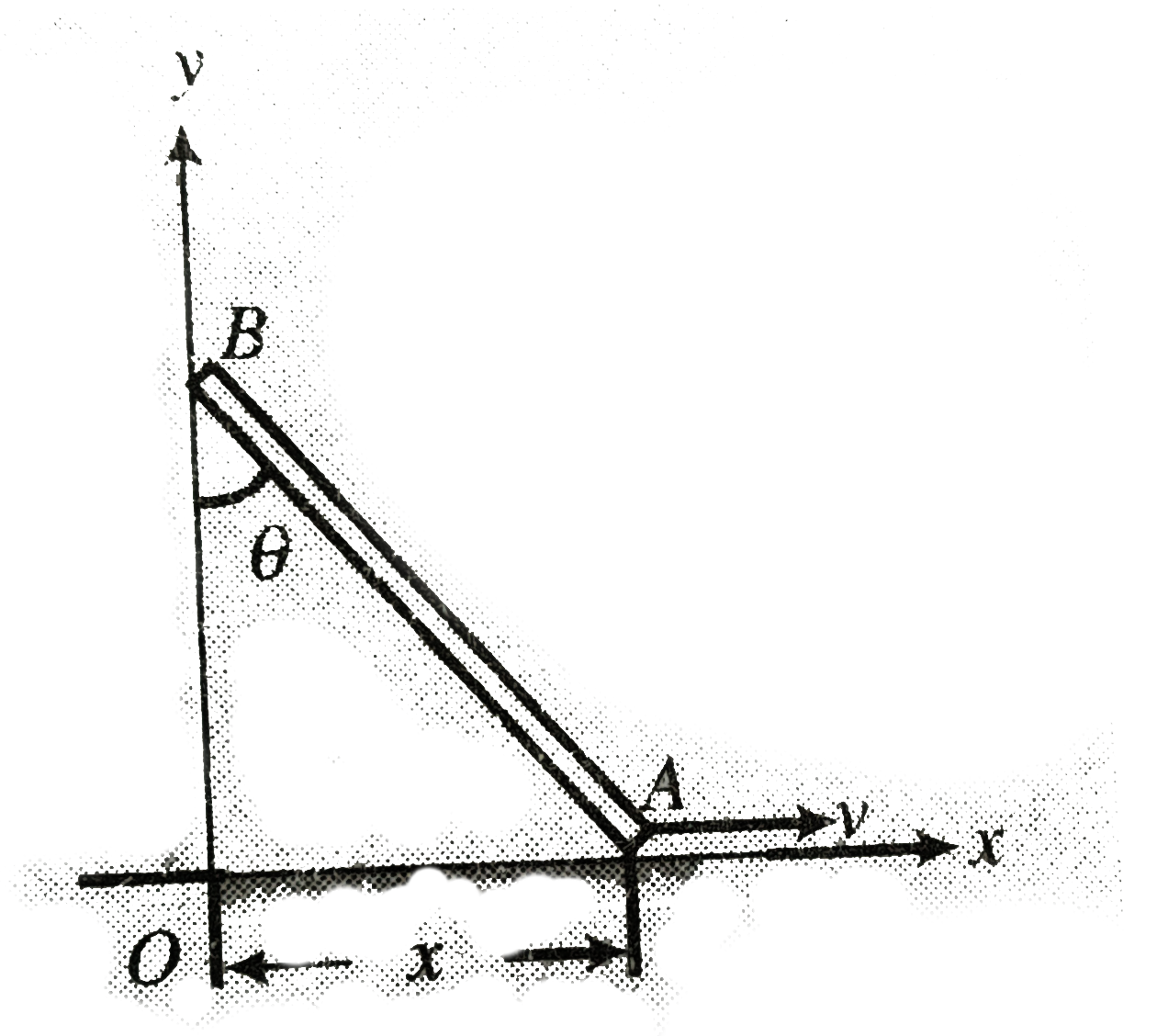
View SolutionTwo rods of the same proper length move toward each other parallel to a common horizontal axis. In the reference frame fixed to one of the rods the time interval between the moments, when the right and left ends of the rods coincide, is equal to . What is the velocity of one rod relative to the other?
View SolutionWhat is the angle between two hands of a clock when the time in the clock is
(a) 9’O clock (b) 6’O clock
View SolutionA solid rod AB is moving with the support of two vertical smooth walls, as shown in the figure. If the velocity of the A end of the rod along the vertical direction is u. If the rod is always in contact with the wall. Then the velocity of the B end of the rod:
View SolutionA uniform rod AB of mass 'm' length 2a is allowed to fall under gravity with AB in horizontal. When the speed of the rod is 'v', suddenly the end 'A' is fixed. Find the angular velocity with which it begins to rotate .
View Solution